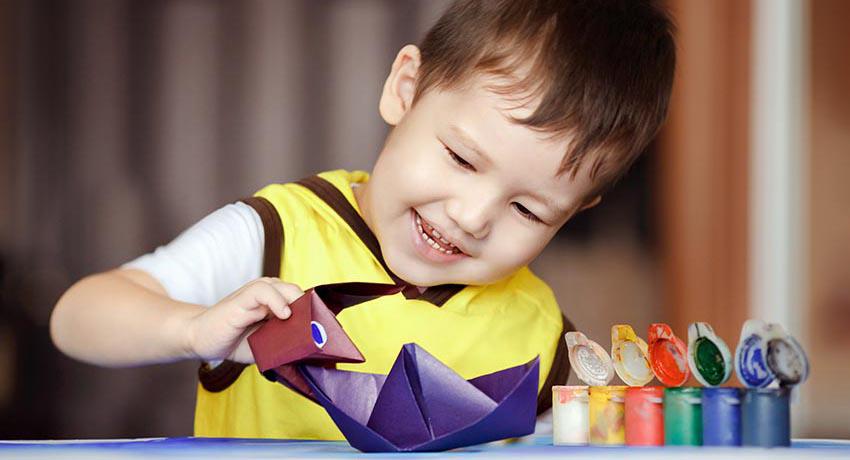How to teach a child to share without forcing?

Are you worried about your child? Are you looking for how to teach your child to share without forcing? Teaching a child to share without forcing is a balance of patience, modeling, and gentle guidance. Here’s a step-by-step approach:
Understand Developmental Stages
- Toddlers (under 3 years): At this age, sharing is challenging because children haven’t developed empathy yet. They might grab toys instinctively and struggle to understand that others have needs too.
- Preschoolers (3–5 years): They begin to understand the concept of fairness, but still need guidance to share willingly.
Model Sharing Behavior
- Lead by Example: Show your child how you share things with others. Share your food, toys, and other items openly with family members or friends. Kids learn by watching adults, so when they see you share willingly, they’ll likely mimic the behavior.
- Positive Reinforcement: When you share, comment on it positively, saying things like, “It feels nice to share with others,” so they see the value in generosity.
Teach Patience and Turn-Taking
- Encourage Waiting: Instead of forcing your child to hand over a toy immediately, teach them how to wait their turn. Use phrases like, “You can play with it when I’m finished,” or “Let’s take turns so everyone has a chance.”
- Use a Timer: For kids who struggle with turn-taking, a timer can be helpful. Set a timer for a certain amount of time, and when it goes off, it’s the other child’s turn. This makes the wait feel more manageable and concrete.
Use “Child-Directed Turn-Taking”
- Empower Your Child: Encourage your child to offer the toy when they feel ready. Words like “You can play with that when I’m done” help them take leadership of the situation. This promotes politeness.
- Ask, Don’t Demand: Teach children how to ask for a turn politely by saying, “Can I have a turn when you’re done?” instead of demanding it.
Acknowledge Feelings
- Empathy and Validation: If your child is reluctant to share, acknowledge their feelings before encouraging sharing. Say something like, “I know you really like that toy, but remember, we take turns so everyone can have a chance to play.”
- Discontentment and Jealousy: Address feelings of jealousy or frustration when they arise. Teach them how to manage those emotions instead of immediately resolving the situation by forcing them to share.
Create Opportunities for Generosity
- Praise Willingness to Share: When your child shares on their own, even if it’s just a small gesture, praise them for being generous. Highlight the positive feelings they experienced by sharing.
- Start with Small Acts: Encourage small, manageable acts of sharing, such as sharing a toy with a sibling or offering a bite of their snack to a friend.
Encourage Gratitude and Contentment
- Focus on What They Have: Help your child appreciate what they already have. Before playdates, remind them of the toys they’re excited to play with and let them know it’s okay if they don’t want to share everything.
- Teach Appreciation: Reinforce the idea that sometimes it’s not about what you get, but about making others happy. Encourage them to say, “I’m glad I could share with you!” when they do.
Allow Time for Growth
- Patience is Key: Understand that learning to share takes time, and it’s not something that happens overnight. Your child will need ongoing reminders, encouragement, and positive reinforcement as they grow.
- Respect Their Boundaries: If your child isn’t ready to share, that’s okay. Give them the time and space to decide when they’re comfortable.
Psychological Impact of Domestic Violence on Children Brain
By fostering empathy, patience, and respect for others’ needs, you can encourage your child to share without forcing them. It’s all about creating an environment where generosity comes naturally and authentically.

The Secret to Teaching Kids to Share Without Force: A Gentle Approach
It’s OK Not to Share – A new approach to teaching generosity to children.
Forced vs. Authentic Sharing: Forced sharing can cause resentment and doesn’t teach real generosity. Children should choose to share when they’re ready.
Encouraging Patience and Turn-Taking: Children need to practice patience and waiting for their turn. It’s essential for their emotional development and impulse control.
Child-Directed Sharing: Let kids initiate sharing and set limits themselves to teach respect and assertiveness.
Emphasizing Willful Sharing: Rather than forcing children to share, encourage them to choose to share when they feel it’s right.
Situational Sharing: In public spaces or crowded situations, sharing becomes more about fairness and community, teaching kids to consider others.
By focusing on patience, respect, and genuine generosity, children will internalize compassion and gratitude, making sharing more meaningful as they grow.
Teaching Kids to Share the Right Way: A Guide to Positive Parenting
Parenting is full of tricky moments, and one common dilemma for parents is how to teach kids to share without forcing them. Here’s a breakdown of why this approach matters and how we can raise compassionate kids by teaching, not forcing.
Young Kids and Sharing Don’t Mix
Children, especially toddlers, aren’t naturally inclined to share. At a young age, they lack the ability to the importance of sharing. It’s natural for them to grab toys they want, regardless of who’s playing with them. Until they’re closer to three years old, they haven’t developed the skills to grasp sharing truly.
Why Forcing Children to Share Doesn’t Work
Forcing kids to share doesn’t foster true generosity. Instead, it teaches them that their own desires don’t matter. This can build resentment and confusion about the concept of sharing.
As parents, it’s essential to avoid making kids share just for the sake of appearances. Instead, children should be allowed to understand why they might choose to share on their own terms, without feeling pressured.
Teach Kids about Sharing by Modeling
Children are keen observers. By modeling good sharing behavior, you can show them the value of generosity. Share food, toys, and other items with them and others to create an environment where sharing feels natural. This helps children learn to mirror positive behaviors, such as waiting for their turn or asking politely for something they want.
What if Another Kid Won’t Share with Your Child?
If another child isn’t sharing, that’s okay too. Just as you won’t force your child to share, it’s essential to allow your child to experience the natural disappointment of not getting something they want. This helps them learn patience and how to handle frustration, both crucial life skills.
How to Set Your Kids Up for Success
Prepare before playdates: Ask your child if there are toys they prefer not to share and put them away.
Teach turn-taking by letting kids play with their toys as long as they want, and then teach them to wait for their turn.
Step back: Let kids figure out sharing on their own. This often leads to more natural and meaningful interactions.
Understand individuality: Every child is different. Some will share more easily than others, and that’s perfectly fine.
By shifting the focus from forced sharing to respectful turn-taking and modeling, kids will internalize the importance of sharing without the resentment that often comes with it. Over time, they’ll learn that generosity is about choice, not obligation.
How to Encourage Kids to Share Voluntarily: Tips for Stress-Free Parenting
Children Aren’t Naturally Inclined to Share: Young kids, especially toddlers, struggle with sharing. They act on impulse, grabbing what they want without considering the feelings of others. Teaching them to share before they’re developmentally ready can lead to resentment rather than generosity.
Forcing Sharing Creates Resentment: Forcing children to share, especially when they’re not ready, can create bitterness. Instead of teaching them the value of sharing, it teaches them to dislike it. Children should be allowed to enjoy their possessions until they’re ready to offer them voluntarily.
Modeling Generosity: The best way to teach kids about sharing is by modeling generosity ourselves. By demonstrating acts of kindness and sharing, parents can show their children how to act generously without coercion.
Addressing Discontentment and Jealousy: Teaching kids gratitude and contentment is essential to fostering generosity.
Fostering Generosity Over Forced Sharing: The goal is to encourage children to share voluntarily and with a generous spirit. This can be achieved by highlighting opportunities for them to demonstrate love and kindness, while also cultivating contentment in situations where sharing isn’t possible.
This approach encourages thoughtful parenting that focuses on the heart behind actions, ultimately aiming to shape children into generous, compassionate individuals.



